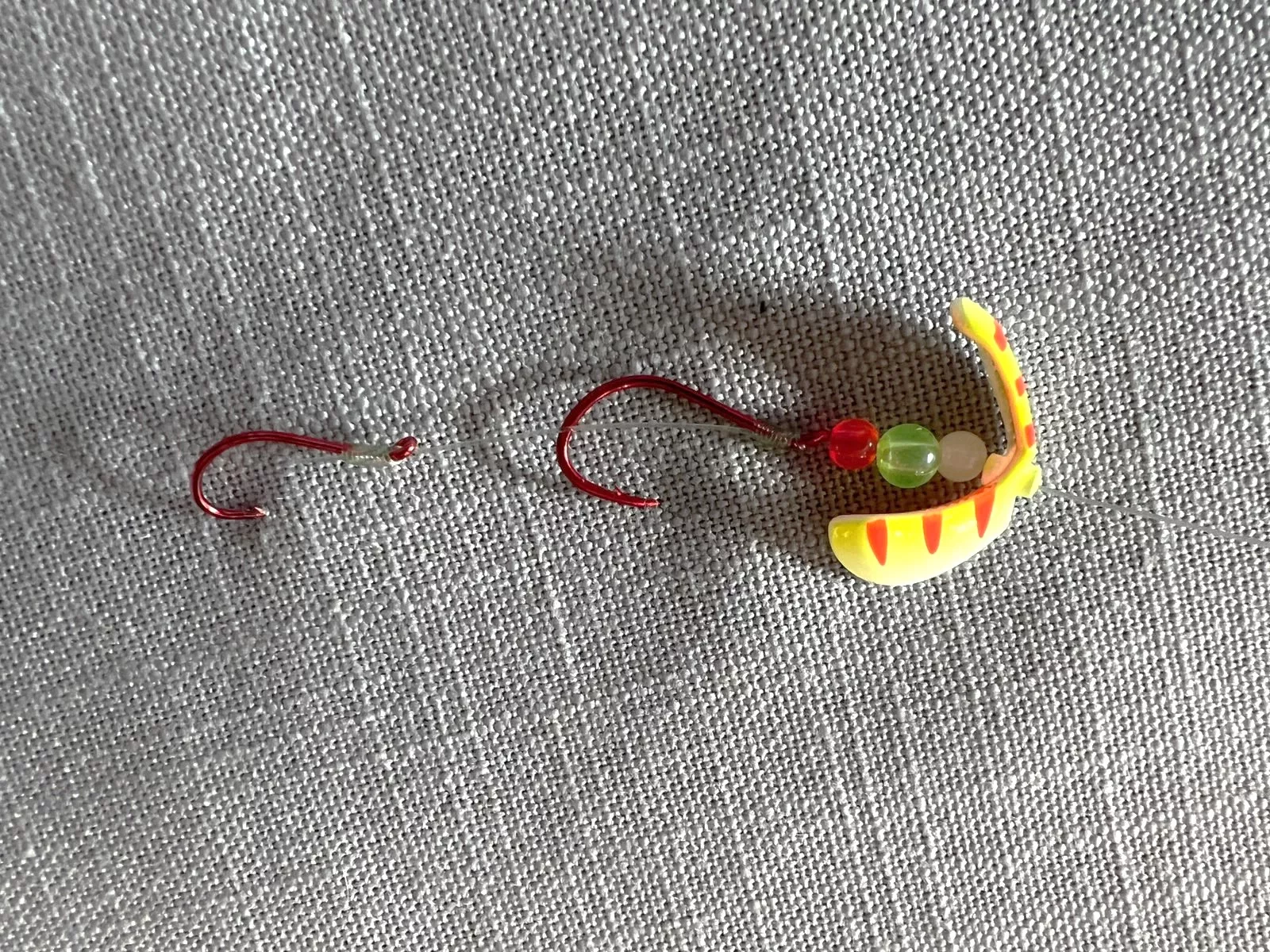
Second Chance to Connect. A second hook, often referred to as a “stinger hook,” helps thwart short-striking fish. Stinger hooks can be added to a variety of lures and set-ups for various species too, making them quite versatile. Simonson Photo.
By Nick Simonson
I just finished re-reading J.R.R. Tolkien’s Lord of the Rings series, the first set of real books I can recall reading on my own as a young teenager. In between that time and now, Hollywood managed to turn out nine hours’ worth of award-winning films covering the trilogy, and, though a bit unnecessary in terms of length, a six-hour-plus, three-part version of its prequel, The Hobbit. In going through all four books over the past month, I was reminded of how broad and vast the universe that Tolkien created is (and some cool scenes and characters the movies did not cover), and of my favorite sword in the series passed down through its protagonists – Sting.
Sting isn’t really a sword compared to other blades detailed in the stories of Middle Earth, it’s just a dagger-like weapon found in the early goings of the first tale chronicling Bilbo Baggins’ adventure to the Lonely Mountain and his showdown with the dragon Smaug. But for the small statured hobbit, it makes a fine weapon that he hands down to his heir, Frodo, for the trek to Mount Doom in the main trilogy. It gets the job done all throughout the stories, fending off goblins, orcs, and letting the main characters know when both are present due to its keen glow, and not just due to name alone, it reminds me of those other similar small accompaniments in fishing – stinger hooks.
Whether tied up as a second (or even third) hook on a snell for walleyes, or attached with a bit of rubber tubing to a spinnerbait’s main shank, a stinger hook can be a great add-on when fish are short striking lures and baits as cold fronts move through in summer and the bite stalls some. In my hand-tied crawler harnesses, for example, I set up a #4 octopus hook as the lead point, and then tie in a smaller #6 octopus as the follow-up hook. This serves two purposes: first, it makes the package a bit more streamlined and compact while adding some insurance at the end of the crawler, and second, it also helps pick up those bonus fish like yellow perch which I often encounter in my walleye trolling endeavors that have a smaller mouth.
It doesn’t end there, however, as there are plenty of chances to sting other species of fish with a secondary hook. Bass spinnerbaits are easily modified to add a second smaller hook which can be thread on through the eye and secured with rubber tubing to ding short-striking smallies in summer. Fly fishing techniques, where legal, often employ a large dry or foam fly as the “hopper” with a second hook in the form of a weighted nymph trailing a few inches behind it on some tippet, known as the “dropper” in the now well-known hopper-dropper presentation. Many jigs too have connection points for commercial clip-on stinger hooks, or one can simply be tied in at the hook bend with monofilament when fishing larger minnows for walleyes. Even in-line spinners for muskies and pike can be crafted or modified in a way to add a second hook such as a 4/0 treble on a split ring threaded just before the bucktail or flashabou skirt which conceals a larger hook such as a 6/0 or 7/0; adding a second point of connection and a better chance at hook-ups, all without fouling the action of the bait on the retrieve, or messing it up on the cast.
There are a lot of ways to pick up fish with a secondary hook, and when done right those positive connections can climb when fish are short striking, longer baits are being offered up, or fish are simply slashing at a lure out of aggression and not hunger. Like the little blade that got it done from the outset of The Hobbit to the final trek in The Return of the King, there’s room on many lures and in multiple presentations to add a little sting…in our outdoors.
